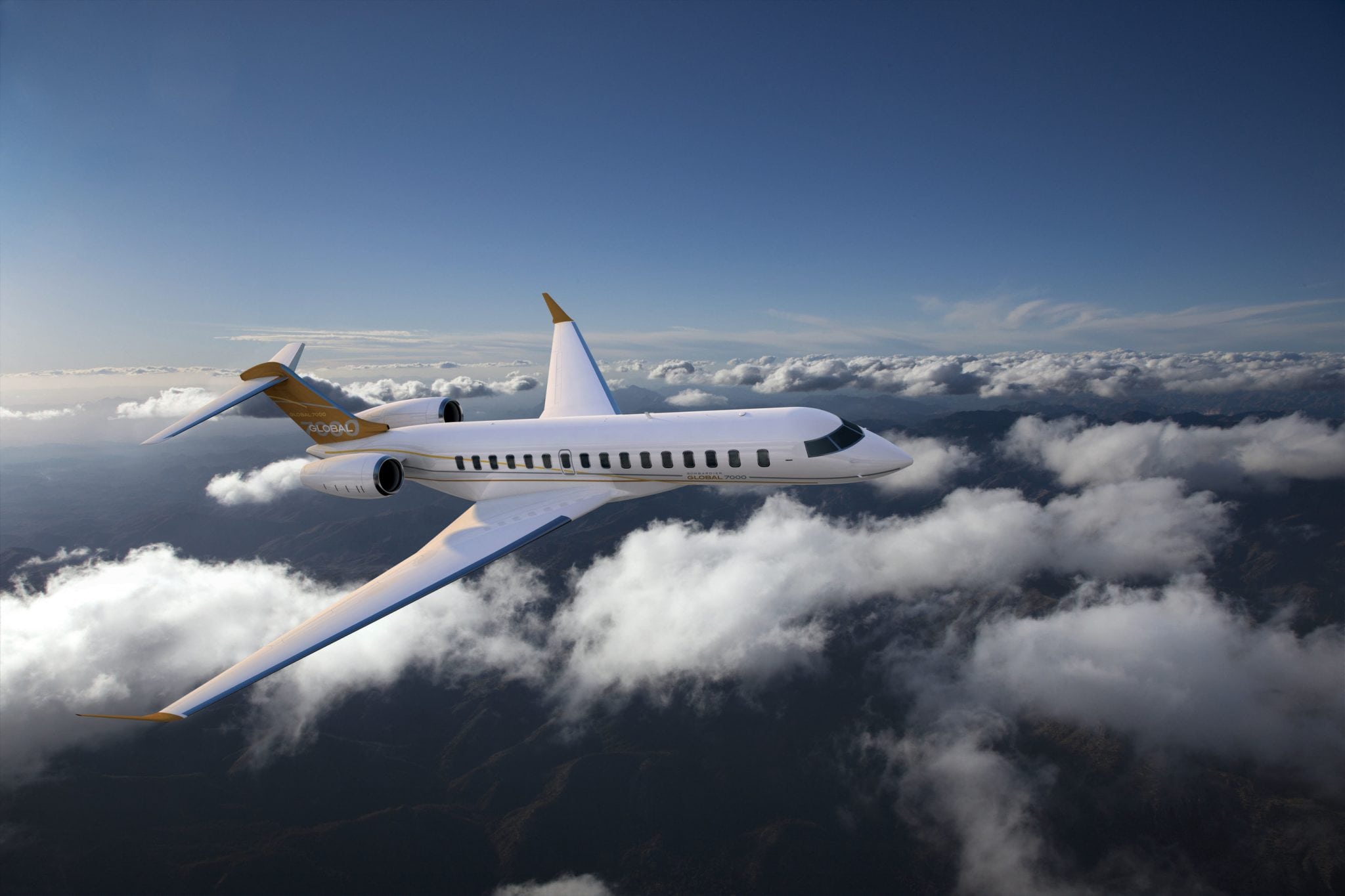[Avionics Today 07-31-2015] Second quarter 2105 earnings for both biz jet giants, Bombardier and Embraer, have turned up troubled revenues despite an uptick in aircraft sales. Bombardier has been sailing rough seas for the last few months, announcing a “pause” to its Learjet 85 program alongside scale backs in Global 5000 and 6000 production and massive company restructuring. Additionally, the company has added to setbacks by announcing a further two-year delay for the entry into service of its Global 7000 and 8000 aircraft.
 |
| Bombardier Global 7000. Photo: Bombardier |
Bombardier had previously placed the Global 7000’s entry into service in 2016, with the Global 8000 following on its heels in 2017. New guidance suggests the 7000 won’t find its way into the market until 2018. While analyst Rolland Vincent of aviation consulting firm Rolland Vincent Associates told Avionics Magazine that the two-year setback isn’t all that surprising, it still presents a major hurdle for the company, whose backlog is stalling.
“This is a significant setback for the organization, as the Global family is the primary source of margins (and backlogs) for Bombardier’s aerospace business,” Vincent said, noting that the Learjet 85 program has been all but written off for the Canadian company. “We have modeled the so-called pause of the Learjet 85 for what it really is — a program termination — as there is no on-going activity on this program, nobody assigned to it, and the development costs have been written off.”
Bombardier also firmed up cutbacks for the Global 5000/6000 series announced earlier this year, to a production rate of an estimated 30 percent. This cuts an original target of 80 planes to somewhere around 50.
“The severity of the cuts … were in line with a return to pre-2013 production rates. We think that Global 5000/6000 delivery rates will probably settle between 50 and 55 units per year, at least for the next three years, somewhat lower than today’s guidance,” Vincent predicted.
The good news, according to the analyst, is that the bulk of development work on the CSeries is now behind the organization and seems to be firmly on schedule, with Bombardier expecting to secure certification for the CSeries 100 by the end of the year and the CSeries 300 just six months later. Bombardier’s focus now has to shift toward sales, “although $50 oil is a headwind that is not helping the business case for an airline looking at the CSeries,” Vincent notes.
With new CEO Alain Bellemare at the helm, Bombardier promised to do just that and turn efforts to filling the suspended CSeries backlog, which currently stands at 243 firm orders and 360 signed commitments.
“Our team is working to firm up these commitments while pursuing major sales campaigns,” Bellemare said on a conference call yesterday regarding second quarter profits. “We are now building renewed momentum in our sales campaigns to further strengthen our backlog.”
The business jet backlog is looking healthy enough standing at $22 billion — among the largest in the industry — but still saw lower-than-normal orders due to market softness in regions with up and coming economies, which may be affecting the market as a whole.
“Demand from emerging markets — including the [Brazil, Russia, India, China and South Africa] BRICS — has certainly softened, but we have to remember that these same countries were sources of orders that helped the industry sustain itself quite nicely through the recession and subsequent recovery. This ‘tide’ lifted all boats, Embraer and Bombardier included,” Vincent said, but noted that the market is shifting to a more North American focus. “Things are different now, and the ‘game’ is being largely played in the United States, where Embraer and Bombardier face strong locally-based competition.”
And when it comes to the return of a strong U.S. market, things bode well for the industry. “We like what we hear about the strength of the U.S. market, where corporate buyers appear to be coming back to the table to sign purchase contracts,” he added.
Vincent sees the return of these corporate buyers as a good sign for all Original Equipment Manufacturers (OEMs), but particularly for those who have something “new and enticing” to sell, including those in the middle of the market where customer purchase intentions are strongest, such as the Legacy 500, Citation Latitude, Challenger 350 and Gulfstream 280.
In this way, Vincent sees Bombardier — whose revenues were up 2 percent over the same period last year — on its way to recovering financial health in the next few years, as the company has a number of strategic competitive advantages, including a “large customer base, well-received products, and a global perspective to its business operations and a reputation for innovativeness.” These advantages, combined with Bellemare’s three to five year strategic plan, may bring the company back up to speed, should the new leadership be able to successfully initiate cultural change across the company.
While Bombardier may be on its way to getting back on track, Embraer’s revenue dip is somewhat unusual, particularly given that biz jet sales in the company were up for the quarter. The company locked in a backlog of $22.9 billion for the quarter but revenues slipped 14 percent for the second quarter 2015 when compared to the same period last year — racking up $1.5 billion for the quarter.
Embraer also announced a two-year setback to one of its aircraft program’s, the KC-390 airlifter which now expects entry into service around the second half of 2017 and deliveries to begin in the next year.
“Shares in Embraer were hard hit by the Q2 2015 results (with Embraer’s share price down about 8 percent in the day),” said Vincent. “But this seems to have more to do with items such as the KC-390 delay and concerns about the recuperation of KC-390 development costs from the Brazilian government [than the softening market].”
These spending cuts could amount to $300 million due government cuts and currency depreciation for the Brazilian real.